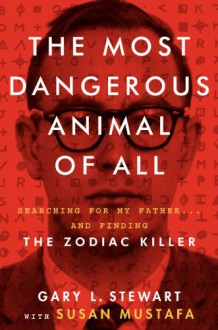(reblogged from Sorry Television)
Americans are enamored with assimilation. After all, if our country is the best, the greatest, the most spectacular in the world, then why wouldn’t its newest residents want to be a part of that? Who doesn’t want to fit in with The Best?
But when we demand that immigrants assimilate, what are we really asking them to get on board with? Chain stores and fast-food restaurants? Income-inequality and underhanded racism? We want immigrants to learn our culture, but only a fraction of American culture isn’t appropriated from somewhere else. We want them to learn English, to ensure that their kids fit in with our kids, but it’s our kids, American kids, who are bombing in test scores against students in other countries. We act like the path to assimilation is laid out in lights, warm friendly lights—but in practice it’s a difficult road with plentiful setbacks. And at the end of it? Well then you’re an American. Gone are the head scarves and exotic foods of your past life, swapped out for fanny packs and frozen chicken nuggets. Assimilation to many Americans means not mutual respect for myriad cultures, but sameness. For a country so embroiled in its own partisanship, in its own divisions and drawing of battle lines, methinks we spend far too much time expounding self-righteously on the importance of cohesion.
There are a few endgames to this kind of aggressive insistence on cultural (or religious or national) unity, none of them pretty. Assimilation can be forced, at a government level, through bans and regulations that chip away at the traditions of a particular culture. Or assimilation can be won (or lost) through fear, through a zeitgeist of intolerance that suggests otherness is to be avoided, otherness is potentially dangerous, otherness should be shamed. In this worldview, allowing otherness means diluting us.
Anders Breivik saw himself as a warrior on the front lines against dilution. As founding member and self-proclaimed “knight Justiciar grand master” of a Knights Templar outfit dedicated to fighting multiculturalism, the “Islamization of western Europe” and the reign of “cultural Marxists,” Breivik felt about Norway in the early 2000s the way Donald Trump feels about America now: There are too many immigrants, too many Muslims. The country is in trouble; the liberals are putting it there. Norway needed to be made Great Again.
When a bomb went off outside the prime minister’s office in Oslo on July 22, 2011, the media and the Norwegian people assumed it was a terrorist attack; many assumed it was al-Qaeda. The bomb killed eight people, and might have killed more, had two errant trucks made it impossible for Breivik to park his explosive-laden van in the ideal direction.
Less than two hours after the explosion, the first reports came in of a gunman on Utøya, a small island in the Tyrifjorden lake. Utøya is owned by the Workers’ Youth League (Arbeidernes ungdomsfylking, or AUF), the youth wing of the country’s Labour Party. On the afternoon of July 22, a man dressed as a police officer was walking around the island systematically shooting teens assembled there for the AUF’s annual summer camp. The earliest reports of the shooting—which lasted for more than an hour before the actual police arrived—estimated the dead at around 10. It would ultimately prove to be 69, mostly teenagers, some as young as 14. When the police finally reached the shores of Utøya, it didn’t take them long to spot Breivik, who by that point had already called them himself, twice, to surrender. Breivik dropped his gone, and lay on the ground to be handcuffed. After months of planning and hours of killing, he’d finished his task.
Murdering so many, enough to provoke nationwide outcry, was Breivik’s plan all along. We know this, as well as extensive details about how he made the bomb that went off in Oslo. We know that Breivik’s terrorism trial, in which he received the maximum 21 years, was what he called phase two, an opportunity to “denounce the Marxist world hegemony” and position himself as a living martyr. We know that phase three takes place in prison, where Breivik plans to “establish a pan-European prison alliance of militant nationalists.” (Good luck without Internet.)
We know all of this because Breivik kept a detailed log of his July 22 preparations, and because in conjunction with his attack on Norway he released a 1,500-page manifesto and accompanying propaganda video, outlining his political views and his personal opinion that he, the knight Justiciar grand master himself, was best positioned to lead the new world order. And we know all that because of Åsne Seierstad, who pored through both documents—as well as police interviews, court records, witness statements and interviews with survivors and with victims’ families—to write One Of Us: The Story of Anders Breivik and the Massacre in Norway.

 Log in with Facebook
Log in with Facebook 











